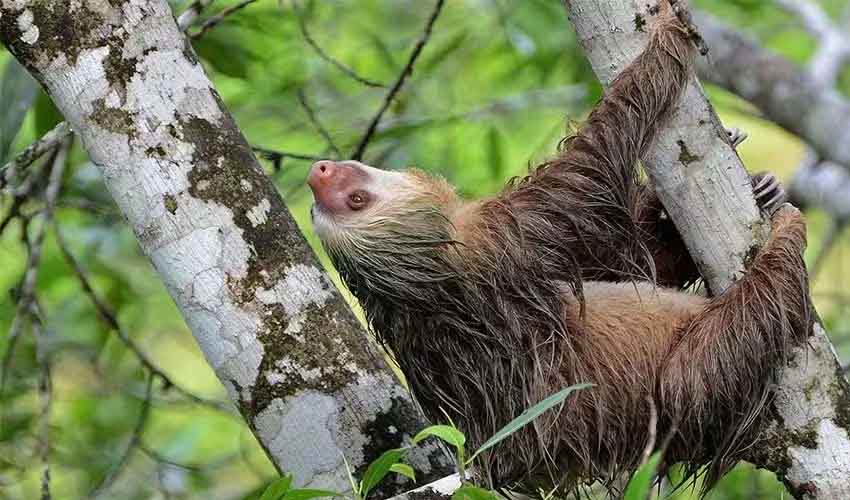Hoffmann’s two-toed sloth is a fascinating example of nature’s adaptability and specialization. Characterized by their languid movements and seemingly leisurely pace of life, these creatures have evolved unique physical and behavioral traits that enable them to thrive in their arboreal habitats.
The anatomy of Hoffmann’s two-toed sloth is perfectly suited for life in the trees. Their forelimbs, equipped with two prominent claws, are slightly longer and stronger than their hind limbs. This difference in limb length and strength is not incidental; it allows these sloths to cling tenaciously to tree branches, supporting their bodies as they hang upside down with remarkable ease. The limbs and feet are not just for clinging but also for moving slowly and deliberately through the canopy, navigating their environment with precision despite their leisurely pace.
The diet of Hoffmann’s two-toed sloth primarily consists of leaves, fruit, and shoots available in their treetop dwellings. This diet, while abundant in their natural habitat, provides relatively low nutritional value, necessitating a suite of adaptations to conserve energy. One such adaptation is their unique method of regulating body temperature. Unlike many mammals, Hoffmann’s two-toed sloths do not maintain a constant body temperature. Instead, they regulate their temperature through behavioral means, such as basking in the sun or seeking shade, as well as through the insulation provided by their thick fur.
The metabolic rate of Hoffmann’s two-toed sloth is notably low, even among sloths, which are known for their slow metabolism. This reduced metabolic rate, combined with a decreased muscle mass, limits their ability to generate warmth through shivering—a process known as thermogenesis. Instead, their low metabolism allows them to survive on the minimal energy provided by their diet, necessitating long periods of rest and sleep.
Distribution
 Bolivia
Bolivia Brazil
Brazil Colombia
Colombia Costa Rica
Costa Rica Ecuador
Ecuador Honduras
Honduras Nicaragua
Nicaragua Panama
Panama Peru
Peru Venezuela
VenezuelaAnything we've missed?
Help us improve this page by suggesting edits. Glory never dies!
Suggest an editGet to know me
Terrestrial / Aquatic
Altricial / Precocial
Polygamous / Monogamous
Dimorphic (size) / Monomorphic
Active: Diurnal / Nocturnal
Social behavior: Solitary / Pack / Herd
Diet: Carnivore / Herbivore / Omnivore / Piscivorous / Insectivore
Migratory: Yes / No
Domesticated: Yes / No
Dangerous: Yes / No






